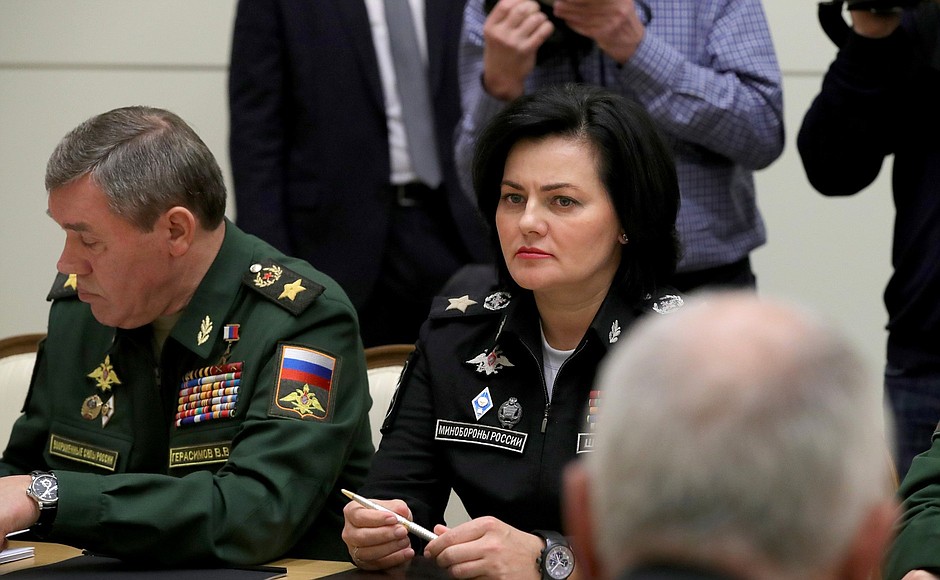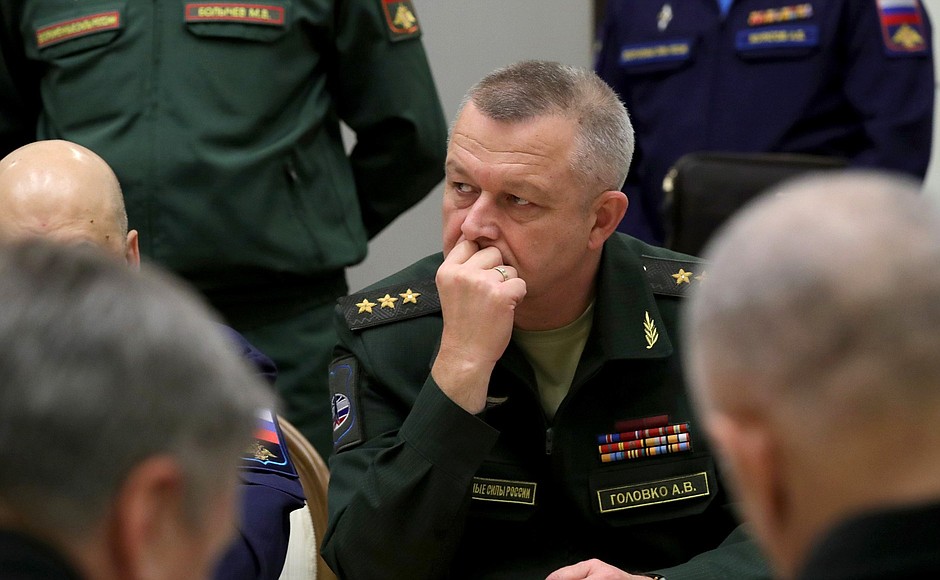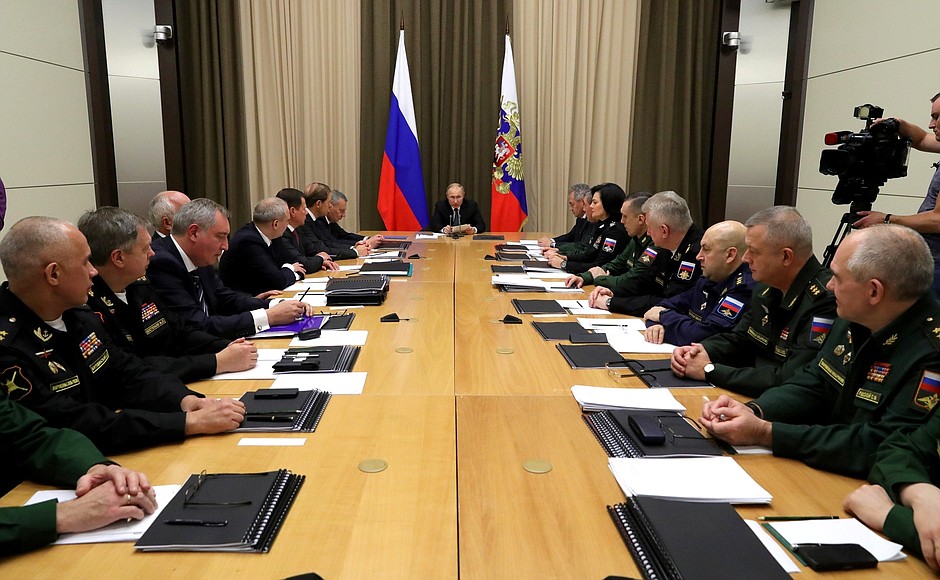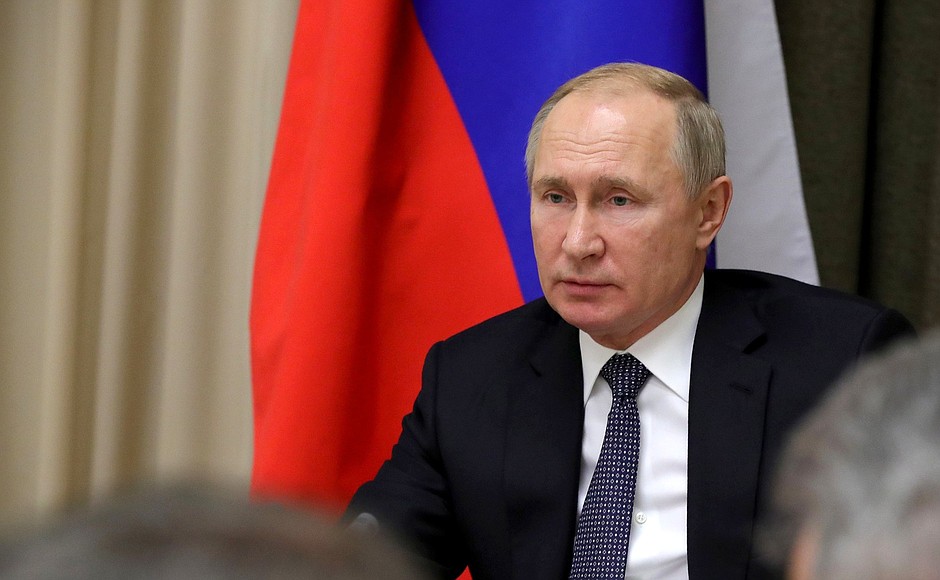The Supreme Commander-in-Chief continued a series of meetings on military subjects. The meetings are on the current state of and development prospects for the Russian Navy. On this day, the meeting participants discussed issues related to the use of high technology in the Navy.
The latest series of the President’s meetings with the Ministry’s leadership and defence industry representatives began in Sochi on Monday.
* * *
Beginning of meeting with Defence Ministry leadership and heads of defence industry enterprises
President of Russia Vladimir Putin: Good afternoon, colleagues,
Today we are holding the third meeting on the development of the Navy.
As you know, the effectiveness of the Navy, as well as of the Armed Forces in general, largely depends on the timely receipt of data from space systems, the reliable operation of navigation and communications systems, the integration of all information resources, and artificial intelligence capabilities for solving problems on the battlefield. These are very complex issues, mainly closed to public discussion, and we will consider them in detail today.
I would like to note that the leading countries are rigorously developing modern space systems for military and dual purpose use, and upgrading and improving their technical specifications. As for the US military-political leaders, they actually quite openly consider outer space as a theatre of war and, accordingly, are planning military operations there.
To maintain strategic superiority in this area, the United States is accelerating the development of space forces, which are already carrying out operational training for this purpose.
Russia has consistently opposed and will continue to oppose the militarisation of space. At the same time, the developments in this context require us to focus on strengthening the orbital group, as well as the aerospace industry as a whole.
Russia’s defence and dual-purpose orbit constellation has benefited from significant upgrades in recent years, considerably enhancing the capability of the missile warning system’s space components.
Satellites within the Unified Space System can promptly detect ballistic launches from military bases and from sea, and send alerts to the country’s leadership and the national command post and to operations centres.
This essential element in the airspace defence system once again proved its effectiveness during the Grom-2019 strategic command-post exercises.
Let me add that this year, we have completed the deployment of a high-speed communication space complex in geostationary orbit.
Of course, we are committed to laying the groundwork for future advances in this area. Defence institutions are developing new systems and complexes, and manufacturers are learning to make spacecraft using Russian-made components.
In May 2019, we had a separate meeting to discuss the current state and future of the space troops within the Aerospace Forces, and instructions to this effect were issued following the meeting. Today, I would like to hear from you about their implementation.
There is another important subject that is relevant for all services and branches of the Armed Forces. I am referring to developing and delivering up-to-date electronic warfare systems.
Over the past years, companies operating in the defence industry have created over 20 electronic warfare technology samples designed to enable electronic warfare troops to deliver on their mission, while surpassing similar foreign solutions.
We need to keep improving these systems, as well as data systems for ensuring the effective deployment of troops.
In doing so, we need to keep in mind the experience of using electronic warfare technology in exercises and during combat, considering that they were used quite actively during the operation in Syria.
I would like to ask you to report on the priorities in this critical sphere.
<…>



